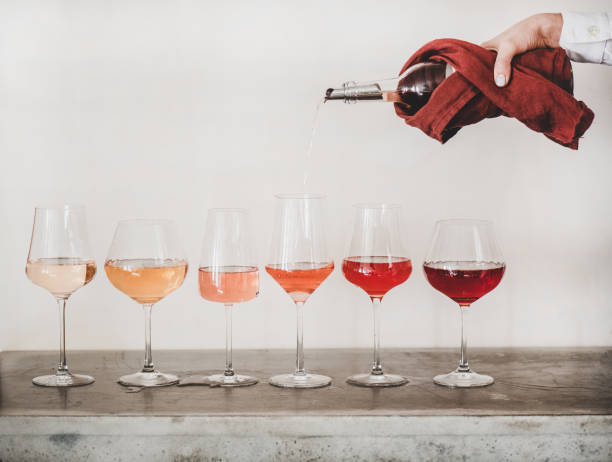The world of wine and cheese is a delightful journey for the senses, a symphony of flavors and aromas that captivate the palate. When it comes to creating a harmonious marriage between these two gastronomic delights, sommeliers play a crucial role in guiding us through the intricate dance of tastes. Pairing wine with cheese is both an art and a science, requiring an understanding of the characteristics of each and the ability to balance and enhance their unique profiles.
Understanding the Basics:
Before delving into the specifics of pairing, it’s essential to grasp the fundamentals of both wine and cheese. Wines are categorized based on factors such as grape variety, region, and production methods, resulting in a diverse array of flavors ranging from fruity and floral to bold and tannic. Similarly, cheeses vary in texture, moisture content, and taste, from creamy and mild to sharp and intense.
The key to successful pairings lies in finding complementary or contrasting elements between the wine and cheese. Balancing acidity, sweetness, and texture is crucial, as these factors can either elevate or dampen the overall tasting experience.
Pairing Principles:
- Complement or Contrast:
- Complementary Pairing: This involves matching similar flavors, such as a buttery Chardonnay with a creamy Brie. The shared characteristics create a seamless blend, enhancing the overall enjoyment.
- Contrast Pairing: Contrasting flavors can also create a harmonious pairing. For example, the crisp acidity of a Sauvignon Blanc can cut through the richness of a triple cream cheese, creating a balanced and refreshing combination.
- Intensity Matching:
- Pairing wines and cheeses of similar intensity prevents one from overpowering the other. Lighter wines, like Pinot Noir, pair well with delicate cheeses, while robust reds, such as Cabernet Sauvignon, stand up to stronger, aged cheeses.
- Texture Harmony:
- The texture of both wine and cheese plays a crucial role. Creamy cheeses often pair well with fuller-bodied wines, while harder cheeses may complement lighter, crisper wines. This creates a pleasant balance on the palate.
- Regional Pairing:
- Exploring regional pairings is a classic approach. Wines and cheeses from the same region often share a natural affinity as they have evolved together over time. For instance, a Sangiovese from Tuscany may harmonize beautifully with a Pecorino cheese from the same Italian region.
Classic Pairings:
- Chardonnay and Brie:
- The rich, buttery notes of a Chardonnay complement the creamy texture of Brie. This classic pairing is a favorite among those seeking a luxurious and indulgent combination.
- Sauvignon Blanc and Goat Cheese:
- The bright acidity of Sauvignon Blanc cuts through the earthy, tangy flavors of goat cheese, creating a refreshing and zesty pairing.
- Cabernet Sauvignon and Aged Cheddar:
- The bold tannins and dark fruit flavors in Cabernet Sauvignon stand up to the robust, nutty notes of aged cheddar, resulting in a rich and satisfying combination.
- Pinot Noir and Gruyère:
- The soft, fruity profile of Pinot Noir complements the nutty, slightly sweet characteristics of Gruyère, creating a harmonious pairing that showcases the best of both.
- Prosecco and Parmesan:
- The effervescence of Prosecco cleanses the palate between bites of salty, aged Parmesan, creating a delightful contrast that keeps the taste buds engaged.
Tips for Perfect Pairings:
- Temperature Matters:
- Serve both wine and cheese at their ideal temperatures. Whites and sparkling wines are generally served chilled, while reds are served at slightly cooler than room temperature. Cheeses should be allowed to come to room temperature for optimal flavor.
- Experiment and Explore:
- Don’t be afraid to step outside the classics. Experiment with different varieties and styles to discover unique and unexpected pairings that suit your taste.
- Consider Accoutrements:
- Enhance the experience with accompaniments such as nuts, fruits, and bread. These elements can add additional layers of flavor and texture to the pairing.
- Know Your Audience:
- When selecting pairings for a gathering, consider the preferences of your audience. Offering a variety ensures there’s something for everyone to enjoy.
Mastering the art of pairing wine with cheese is a rewarding pursuit that allows enthusiasts to explore the vast and nuanced world of flavors. Sommeliers, with their expertise and refined palates, guide us through this journey, helping us appreciate the intricate dance of tastes and aromas. Whether opting for classic combinations or experimenting with new and bold pairings, the key is to savor the experience and let the symphony of flavors unfold on the palate. Cheers to the delightful fusion of wine and cheese!



